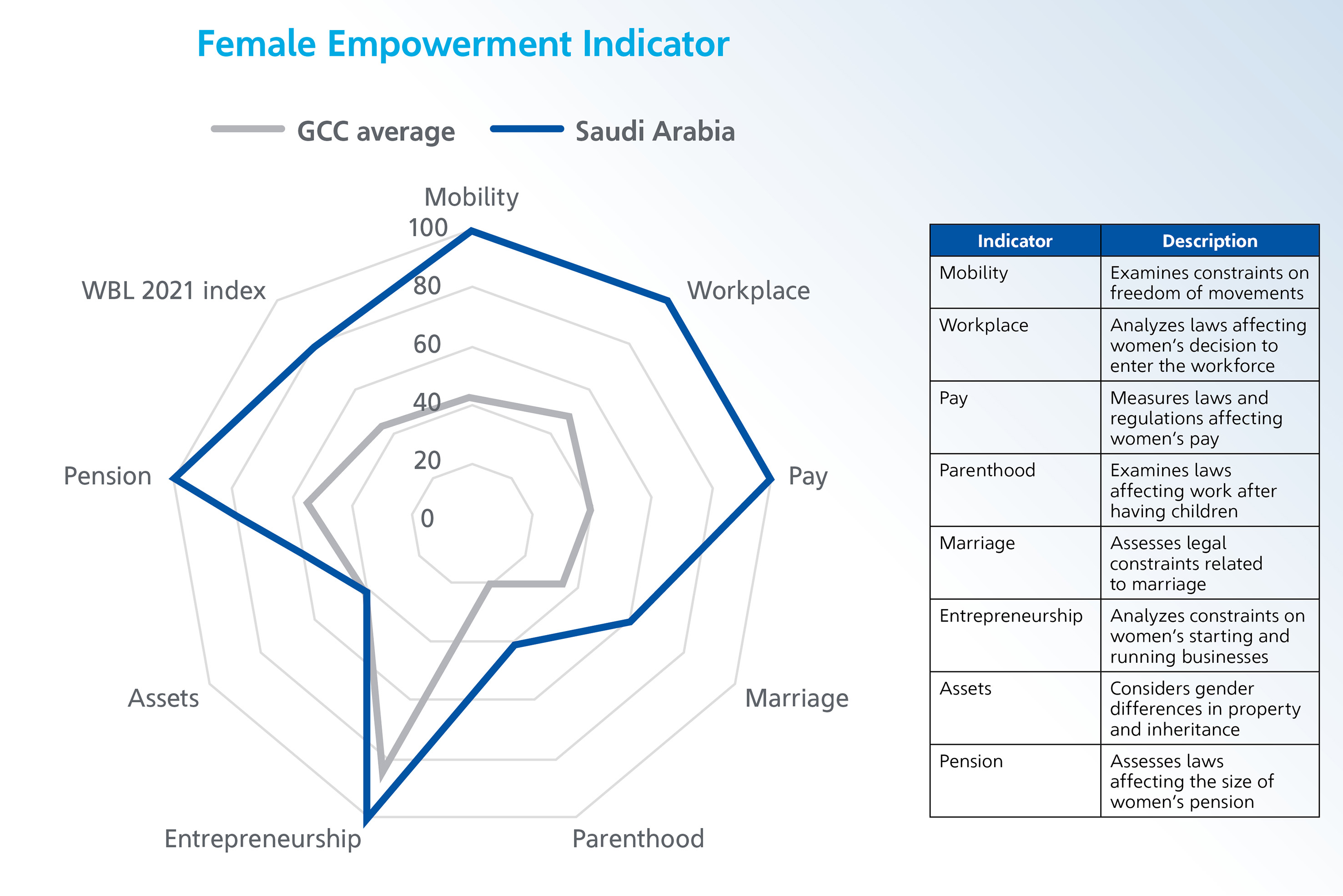Women’s Empowerment
Empowering women in the workplace critical to Kingdom’s economy

Global June 30, 2021
In the GCC, Saudi Arabia has made great strides, but it is just the beginning.
Saudi Vision 2030 — a wide-sweeping plan to transform the Kingdom’s economy — strives to increase to 30% the participation rate of women in the workforce. Complementary to this goal is the empowerment of females in leadership positions, which in turn will play a vital role in developing capable female leaders in senior management positions so that they become part of the decision-making process in both the public and private sectors.
The World Bank has developed a framework to measure women’s empowerment globally, consisting of several indicators that attempt to measure empowerment from different aspects while ensuring reliable comparisons between different economies.
The World Bank’s findings show that the impact of Vision 2030, which was launched in 2016, have greatly contributed to the progress in female empowerment by facilitating accessibility for women to enter the workforce, which has resulted in an increase in female participation by about 14 percentage points (from 19% to 33%) — already exceeding by 3% Vision 2030’s initial goal.
The Kingdom has performed relatively well across several indicators in comparison to other Gulf Cooperation Countries (GCC). Saudi Arabia ranked better than its GCC peers in terms of pay, workplace laws and regulations, mobility, and making it easier for women to start and run a business.
When comparing the Kingdom against individual GCC countries, the only indicator where Saudi Arabia fell behind was in the “parenthood” category relative to the UAE, which was ahead by 20%. The parenthood indicator examines laws affecting women’s work during and after pregnancy.
Nonetheless, the Kingdom’s post-Vision policy changes contributed to removing many of the constraints on women’s ability to access the labor market. While the government altered the perception that the workplace was an unsafe environment, the work policy also prohibited the dismissal of pregnant women and discrimination. Another positive policy change was to permit women to drive, which improved mobility.
The World Bank index provides a holistic outlook for measuring women’s ease of accessing the labor market. The increase in women’s labor force participation are the first steps to women’s workplace empowerment, which continues to make progress in the Kingdom. Despite the great improvement in empowering females, however, there is still a long way to go in retaining women in the workforce, supporting them in leading senior management positions, and encouraging them to influence and drive change in the Kingdom’s future.
— By Reem S. Alhashem and Sylvain P. Cote




